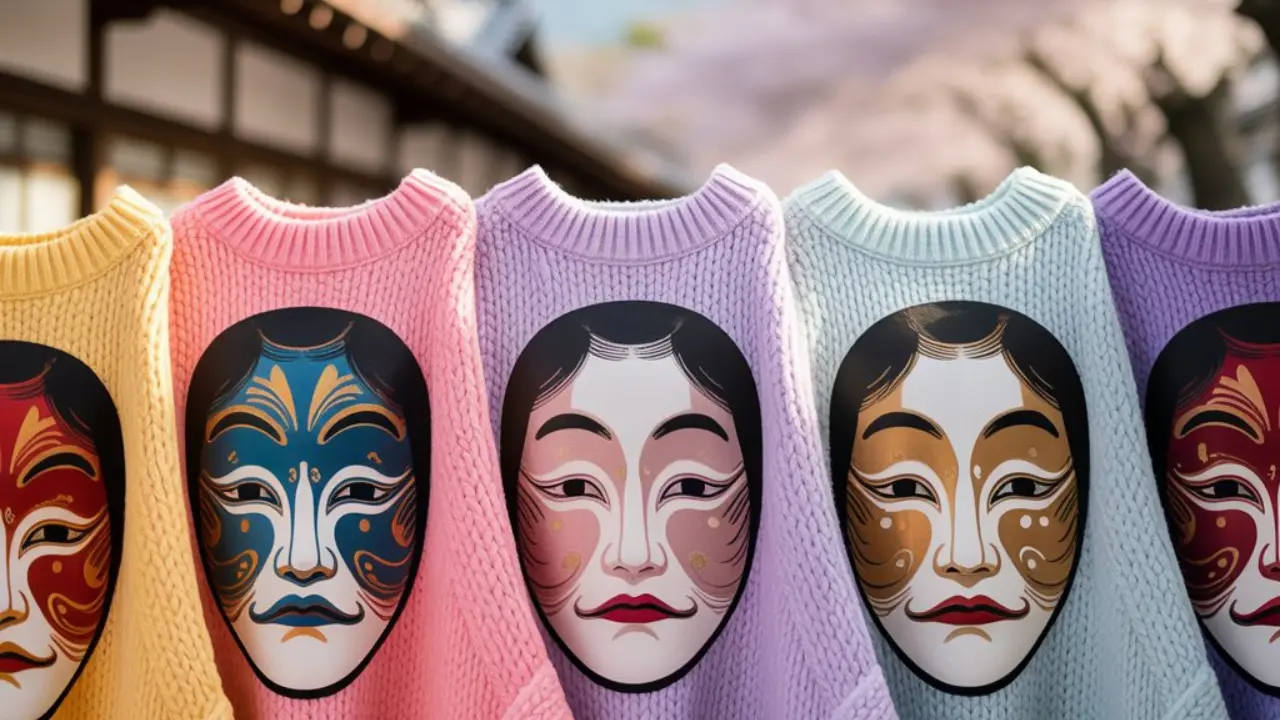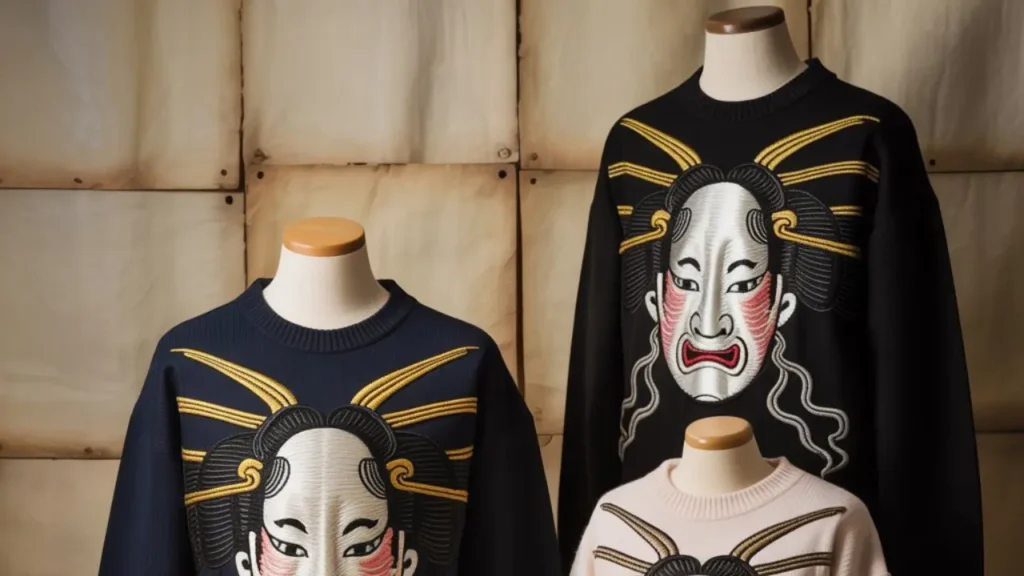Sweaters or knitwear were not first introduced in Japan. Later in the 19th century, when Japan opened its borders to Western influence, Western-style uniforms, coats, and sweaters gained popularity among the elite and the military. Japan began producing its knitwear using knitting machines, which enable the production of sweaters in bulk quantities with high quality and intricate details. Japan produces sweaters or hoodies by using highly imported wool or synthetic yarns, which dominate over the textile industry.
Many designers, such as Issey Miyake, Yohji Yamamoto, and Rei Kawakubo, redesign sweaters or knitwear with avant-garde approaches. These sweater designs began to influence traditional Japanese aesthetics, such as elegance, harmony, and heed to the fine details they contain. Sweaters became more popular due to their shape and sculptural or oversized texture rather than just as winter wear.
Traditional techniques such as natural dyeing and hand knitting turned Japanese sweaters into more popular modern Japanese knitwear, along with their sustainability. Sweaters with mask designs are used in theater, festivals, and rituals, as masks hold extensive meaning for Japanese culture. Therefore, nowadays fashion designers frequently add these mask designs on sweaters, hoodies, and knitwear as a modern fashion symbol. Some common mask inspirations in today’s fashion clothing include Noh, Kabuki, Hannya, Oni, and Yokai masks.
The sweaters or hoodies with mask designs on them are a symbol of hidden identities, transformation, and performance. Wearing hoodies with mask motifs shows cultural pride, which connects modern fashion to old traditions.
Distinctive Characteristics of Japanese Sweaters

Japanese sweaters or hoodies hold many unique characteristics that can distinguish them from other clothing elements in many aspects. These key characteristics include.
Modest Design:
Japanese sweaters are inspired by Zen and Wabi-sabi aesthetics and are often simple, unique, and clean with muted colors.
Innovative Cuts:
Avant-garde patterns with oversized, asymmetrical, or covered designs make these hoodies or knitwear more than a winter wear collection.
Premium Materials:
Japanese hoodies or knitwear are made of fine, premium materials like wool, cashmere, and alpaca, and traditional Japanese fiber or yarn is also used.
Craftsmanship:
High-quality knitting techniques and seamless construction make Japanese sweaters the best choice for people to wear for both casual and everyday wear.
Casual Wear Fashion:
Japanese sweaters are a mixture of old-century Japanese traditions with modern fashion, along with bold graphics, patchwork, or vintage American influences.
Seasonal alteration:
Japan has unique weather; therefore, Japanese sweaters are designed for both heavy winter and lightweight wear, both for cool or autumn seasons.
Key Features of Japanese Sweaters

Japanese sweaters with eminent mask designs have many key features that make people the right choice of buying.
Comfort and Quality:
Japanese sweaters are made of premium wool, fine cotton, and soft cashmere with embroidery or mask designs. Choose a sweater with natural fibers for long-lasting results.
Authenticity:
Select the genuine stuff with authenticity, as Japanese sweaters are popular among people; therefore, fake material is common. Before buying, check the label and tags, stitching techniques, and special edition tags, or buy from your trusted sellers by checking seller ratings.
What to Expect:
The price range varies according to brand, material used in production, and quality. If a seller sells the product cheaper than the price range, it is fake.
Style and Fit:
Asymmetrical and oversized with bold mask designs and embroidery are popular among people in modern days.
Cultural Impact of Japanese Sweaters
- Global Influence: Japanese sweaters or hoodies are popular worldwide due to their blend of tradition, revolution, and quality.
- Traditional Artwork: Due to traditional inspirations of Japanese culture, some Japanese designers use designs of kimono textiles, sashiko stitching, or indigo dyeing in sweaters or hoodies.
- Streetwear Fashion: Japanese sweaters with bold prints and oversized fits, integrated with layered styling, became popular in Harajuku and Tokyo street styles.
FAQs
Q: What do Japanese sweater mask designs represent?
Mask designs on sweaters or hoodies come from traditional Japanese culture, such as Noh theater, Kabuki face paint, demon masks, or Oni, etc.
Q: Are these sweaters with designs traditional or modern?
Japanese designers integrate modern fashion with old tradition by introducing mask designs on sweaters, knitwear, and hoodies, and create a unique art.
Q: From which material are mask sweaters made?
These are typically made of high-quality wool or cotton with printed graphics to showcase the mask designs.
Q: Why are mask designs popular in Japanese fashion?
Masks are a symbol of mystery, fashion, and transformation; therefore, sweaters with mask designs are popular in the modern era.
Q: Are the mask-design sweaters casual or everyday wear?
Mask sweaters are for both casual and everyday wear, and especially those from Uniqlo collabs are accessible for everyone.

